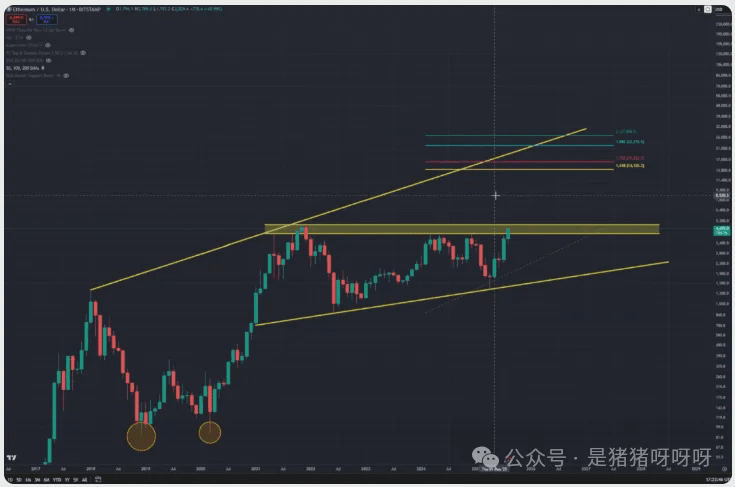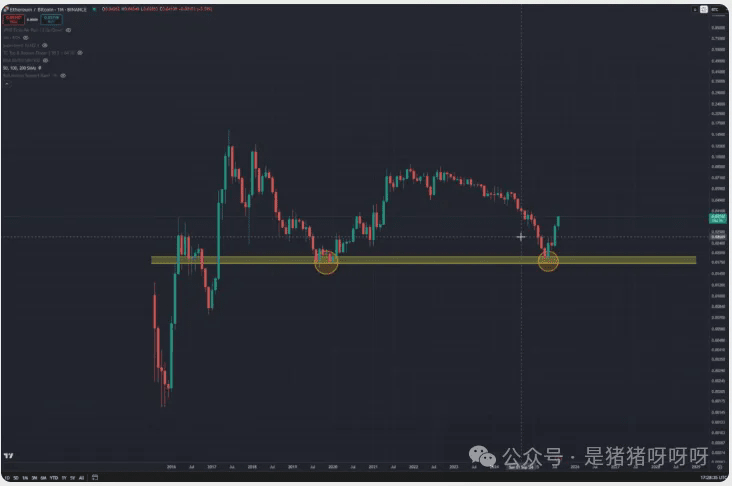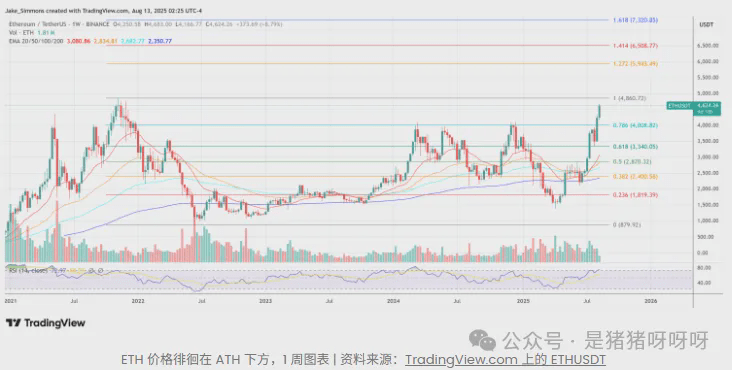Corporate holdings hit a new high, with ETH reserves surpassing 2.7 million coins
In July, Ethereum became the 'darling' of corporate cryptocurrency investments, with the total amount of ETH held by companies reaching an all-time high. According to Binance Research, as 24 new companies joined the ranks of holders, corporate ETH reserves surged nearly 128%, surpassing 2.7 million coins, worth approximately $11.6 billion.
Behind this surge are multiple driving factors: attractive staking yields, ETH's deflationary token mechanism, and institutions shifting from indirect ETF holdings to direct accumulation. Currently, corporate holdings of ETH are nearing half of the Ethereum ETF holdings, accounting for 7.98% of the total ETH supply—up from just 3% in early April, when no publicly traded companies had included ETH in their reserve assets.
Top holders are performing excellently: Bitmine Immersion Tech holds 1.2 million ETH, Ether Machines holds 598,800 coins, and SharpLink Gaming holds 345,400 coins. Accompanied by a wave of corporate buying, the price of ETH has soared from around $1800 in April to over $4300, with market share rising to 11.8%, and 97% of holders are currently in profit.
ETF inflows are booming, institutional enthusiasm continues to rise
The growth of Ethereum ETFs is also rapid. On August 11, U.S. spot ETH ETFs saw a net inflow of over $1 billion in a single day, setting a new daily record since their launch; even more noteworthy is that the spot ETH ETF has recorded net inflows for 19 consecutive days, indicating sustained interest from institutional investors.
Across the entire cryptocurrency market, global cryptocurrency market capitalization grew by 13.3% in July. While Bitcoin still dominates (about 60%), funds are clearly shifting towards altcoins led by Ethereum. With dual inflows from ETFs and corporate funds, along with the attractiveness of staking yields, ETH's position in the digital asset landscape continues to solidify.
Analysts: The once-in-a-decade bull market signal has appeared, key resistance level yet to be broken
Cryptocurrency analyst Kevin points out that Ethereum is showing a 'once-in-a-decade' bullish signal combination, with these technical patterns and indicators never having appeared simultaneously in ETH's history.
From a technical perspective, two months ago, ETH sentiment was at a multi-year low, and the monthly K-line showed a rare demand candlestick (historically often signaling a major rebound), with several momentum indicators rebounding from oversold territory:

The monthly stock RSI shows a 'V-shaped reversal', the MACD histogram has been tightening since the end of 2019, and whale fund flows have rebounded from historical lows. Additionally, ETH's dominance and the ETH/BTC monthly chart have also shown multiple bullish signals, indicating that ETH has entered a long-term strong phase, which will lead altcoins to rise.

However, Kevin emphasizes that ETH has not yet entered a complete price discovery phase, with the key resistance level still being the historical high of $4850. "Do not chase after the four-year major resistance level," he warns, advising to wait for a high time-frame breakout above the $1.71-1.72 trillion 'Total 2' market cap area to confirm a low-risk upward trend.
Macro easing support, but beware of pullback risks
The current macro environment is favorable for cryptocurrencies: Chicago Mercantile Exchange FedWatch data shows that the market expects a greater than 90% probability of a Federal Reserve rate cut in September, with further cuts possible in October and December. The combination of loose monetary policy and expected technical breakthroughs is seen as the 'perfect recipe' for altcoins to strengthen.
But analysts also warn of risks: macro shocks may weaken momentum, and investors should focus on pullback opportunities rather than chasing highs. As of press time, ETH is priced at $4624, just a step away from its historical high, and the once-in-a-decade bull market signal energy has not been fully released—breaking through $4850 could open up a new round of upward space.
